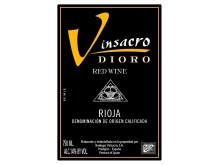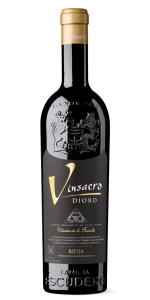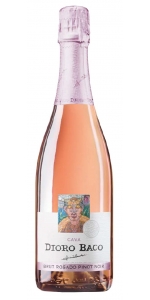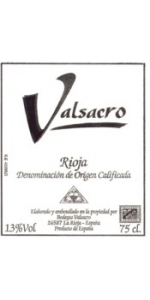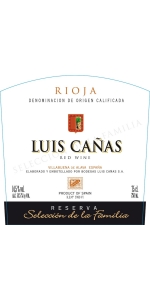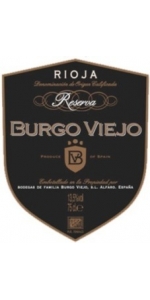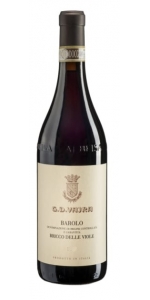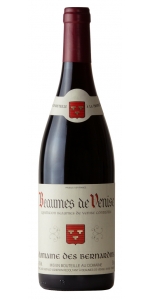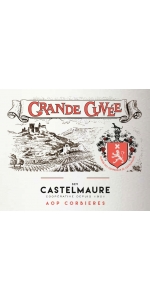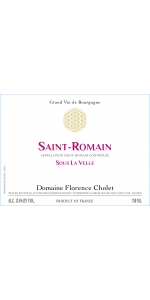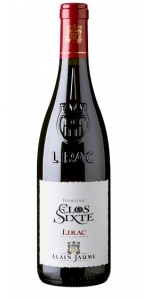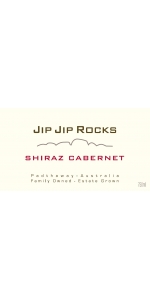Vinsacro Dioro Rioja 2019
| Country: | Spain |
| Region: | Rioja |
| Winery: | Valsacro |
| Grape Type: | Tempranillo |
| Vintage: | 2019 |
| Bottle Size: | 750 ml |
Vinsacro Dioro Seleccion is made from 100% Vidau (Blend of the de varietals Tempranillo, Graciano and Mazuelo with predominance of 70+ years old Garnacha).
A wine to enjoy.Vinsacro Dioro, a wine inspired by the Egyptian, Greek and Roman cultures that worshipped wine and gave it a sacred meaning associated with joy and festivity. It is the fruit of our best vineyards, living witnesses to the work and passion of the four generations that preceded us.
Intense cherry red color. Very expressive on the nose with aromas of good ripeness, balsamic nuances, mineral notes and a very elegant vanilla background. Tasty and full-bodied on the palate, ripe and rounded tannins with a complex and pleasant finish that invites you to order another glass.
Pair with Roast lamb or pork, game, beef steaks, stewed meats. During the aperitive, it will accompany as well with aged and blue cheese.
14% Vol.
Grapes selected manually from our vineyards located on the southern slopes of Monte Yerga in the “Cuesta la Reina” estate. Grapes that are harvested with the utmost care, transported at low temperature in fruit boxes to the winery to avoid any damage to the fruit.
Fermentation is carried out with indigenous yeasts and the wine is kept in maceration for 30 days while breaking the cap daily. Afterwards, the wine is transferred to oak barrels where it remains for 17 months before bottling.
Reviews:
"Really sophisticated and polished with vanilla, coffee, earth and spice scents and oaky flavours. Long, brooding finish."
- Decanter World Wine Award (April 2022), 94 pts
"The 2019 Vinsacro Dioro Selección is a Vidau field blend sourced from Monte Yerga in Rioja Oriental. Aged for 18 months in French and Eastern European oak barrels, it is only released after five years in the cellar. Dark garnet in color, time in the glass reveals soy sauce, bay leaf and thyme notes, along with black fruit and chutney-like undertones. Dry and rich on the palate, it flows with softened tannins and a clingy mouthfeel, lingering long with an impression of tomato leaf. This is a complex, nuanced and solar red that will warmly captivate your palate. - Joaquin HIDALGO"
- Antonio Galloni's Vinous (April 2024), 94 pts
The grapes come from the property owned vineyards in the municipality of Grávalos, south of Monte Yerga at the foothills of the “Cordillera Ibérica” at an altitude between 700–800 meters above sea level. A very high located area where you obtain fresh wines with little alcohol content and with very fine and elegant aromas.
The Pinot Noir variety originating in Burgundy is one of the three most important varieties in Champagne. Harvested around the second and third week of September. The collection of the grapes is done manually, selecting the grapes, preventing any deteriorated grapes from reaching the press or not complying with the quality required to elaborate our cavas.
Raspberry pink with steely glare. Fine bubble that forms a small rosary of slow evolution. Fruity aromas of strawberry, raspberry and flowers (rose petals). Pleasant and potent in the mouth with light acidity and a bubble very well integrated. Persistent and elegan
Review:
Wine Enthusiast Magazine (December 2023), 94 pts
SALE
Vinsacro (Valsacro)( Rioja 2011 is predominately 70yr old 55% Tempranillo, 20% Garnacha, 10% Mazuelo, 10% Graciano and 5% Monastrell aged in American oak.
Dark cherry color. Intense and elegant sweet spices, chocolate and ripe fruit with suggestive toasty aromas that tell us about the aging in good oak. Tasty, powerful, meaty and structured and at the same time easy to drink, very round.
The slogan of our winemaker "Wine is to enjoy". Vinsacro red wine is a wine to be stored, so that positive developments are expected for at least 15 years.
Luis Canas Reserva Seleccion de la Familia Rioja is made from 85% Tempranillo and 15% Cabernet Sauvignon
Aged for 20 months in new oak barrels - 50% French 50% American.
45 years old vines
Alcohol: 14,5º
Total acidity: 5,73 g./l.
Volatile acidity: 0,73 g./l.
PH: 3,53
Free SO2: 28 mg./l.
Reducing sugars: 1,3 g./l.
The “family reserve” from one of Rioja Alavesa’s most enduring family-run wineries. Wines destined to be the Reserva de la Familia label are made from a selection of grapes from old vines, those which combine a series of characteristics such as good orientation and exposure to the sun, and a poor soil which ensures low yields.
This wine is one of very few Rioja wines to blend Cabernet Sauvignon with Tempranillo. Bodegas Luis Cañas was granted permission by the D.O.Ca. to plant this variety as an experiment in the early 1980s.
Tasting notes
A brilliant garnet color with cherry hints on the edges.
The nose offers a complex variety of aromas that combine to bring an intense and sophisticated wine. Initially we can find very ripe berry fruits, smoky notes, raisins and liquor. After a certain amount of aeration, the cinnamon and jam notes appear and, with a little more time, the roasted and spiced aromas are noticed more clearly.
The palate is full, with a good presence of tannins, although these are offset by the glycerine like character, resulting in a fleshy sensation. Long lasting and lingering finish.
Winemaking and aging:
The grapes were cold macerated for 72 hours upon arrival at the winery. They underwent fermentation at 26º C in sealed cement tanks under constant thermal control, with the must pumped over daily. With the paste devatted by gravity, spontaneous malolactic fermentation took place after 45 days.
The wine was aged for 20 months in 50% medium toasted American and 50% French oak barrels. The barrel ageing not only adds tannins from the wood, but stabilizes the wine naturally. After the final racking, it was clarified in tanks with a small amount of natural egg white, decanted after 30 days and bottled directly without any type of filtration. Because this wine’s evolutionary cycle is quite slow, only corks of the highest quality available were used to ensure that it could be prolonged for several years.
Review:
Including 15% Cabernet Sauvignon, the Tempranillo-dominated 2019 Rioja Reserva Selección de la Familia is a crème de la crème selection that was aged 20 months in oak. Its deep purple hue is followed by a sensational nose of ripe black and blue fruits, cedarwood, graphite, smoked tobacco, and chocolate. This carries to a full-bodied Rioja with a powerful, layered mouthfeel, ripe yet building tannins, and serious length on the finish.
-Jeb Dunnuck 95 Points
Burgo Viejo Rioja Reserva is made from 85% Tempranillo, 10% Garnacha & 5% Carignan.
Burgo Viejo Rioja Reserva presents with red ruby color; black pepper and vanilla flavors and some mature black fruit taste too. Well-balanced, well-structured and elegant in mouth displaying some splendid taste of fruit and bouquet too.
Burgo Viejo Reserva Wine vinification has occurred blending different grape varieties to produce an aged wine that will surely keep maturity and fullness from the vineyard until the very moment of uncorking.
VINIFICATION: Alcoholic fermentation in stainless steel vats at controlled temperature; aged in American and French oak barrels -50% each- for 18 months.
Enjoy it with red meat and game.
Review:
"Elegant berries and spiced cherries with a hint of oranges and undergrowth on the nose. Juicy and evenly packed with a fluid, medium-bodied palate and soft tannins. Drink now - Zekun SHUAI (Senior Editor)"
- James Suckling (May 4th 2023), 91 pts
G.D. Vajra Bricco Delle Viole Barolo is made from 100 percent Nebbiolo.
The Barolo Bricco delle Viole shows the signature verticality of its vineyard. The wine is beautifully layered and - while restrained as it’s always the case in the youth of Bricco delle Viole - it also shows a complexity of layers with purple flowers, sweet spices and mineral tones. The palate is noble, with a refined acid spine and profound tannins that promise a long aging potential.
Among the historical vineyards of Barolo, Bricco delle Viole is the highest and the closest to the Alps. It rises from 400 to 480 meters above sea level, on the Western ridge of the village. Its name, “Hill of Violets”, originates from the flowers that blossom early here due to the perfect south exposure. Up above the fogs, Bricco delle Viole enjoys the earliest sunrise and the last sunset every day. Thanks to its vines dating back to 1949 and -now- 1931, a dramatic diuturnal temperature range and this pure light, Bricco delle Viole generates a sophisticated and profound Barolo DOCG of bright aromatics, chiseled tannins and subtle minerality. 2018 is a vintage that shows many nuances of Bricco delle Viole: beyond the signature verticality of this site, the wine offers high tones laced with mineral nuances and plenty of energy and youth.
Review:
A juicy Barolo, with vibrant acidity and a fluid profile that exudes cherry, raspberry, mown hay, mineral and eucalyptus aromas and flavors. Tight yet long, with excellent potential.
#26 Wine Spectator Top 100 of 2023
The last wine poured at my tasting at the winery is the G.D. Vajra 2019 Barolo Bricco delle Viole. With its high vantage point in the hills west of Barolo, Bricco delle Viole is a world apart in terms of soils (with Sant'Agata marl and fossils) and even harvest times. Slow and careful ripening like the kind that characterizes fruit in 2019 renders a very delicate and ethereal expression with floral tones, wild mint and licorice. This organic wine is solid in build and structure. Indeed, Isidoro Vaira remarks that Nebbiolo tannins have changed since the 1970s and 1980s.
-Wine Advocate 97+ Points
Jeweled in appearance, the 2019 Barolo Bricco Delle Viole may be the best wine I have tried yet from Vajra. Its gorgeous and alluring perfume of fresh roses is followed by a Burgundian, elegant red with incredible length and no harsh edges, fine and present tannins, and beautiful, graceful concentration. It is drinking well now, and I will be trying to get my hands on as much of this as possible. Drink 2025-2045.
-Jeb Dunnuck 97 Points
Dark ruby color. Aromas of cherry, currant, vanilla bean and hint of tar. Full-bodied, with flavors of cherries, cocoa powder and oak. A touch of sweetness on entry with a little bit of air with soft tannins that are starting to integrate well.
The latest step in the project is Vinsacro (formerly Valsacro) Dioro. The earlier Valsacros were made from a field selection of the older vineyards. Now, thanks to the new facility Amador has been able to build an upmarket version of Vinsacro (formerly Valsacro) with a four-stage selection process that includes an initial field selection of the fruit followed by a second table selection as the grapes come into the winery. After fermentation wine from selected tanks is transferred to new French oak barrels for 12-14 months of barrel age. Finally, the best barrels are set aside for Dioro and the remainder used to "upgrade" the normal Vinsacro.
Vinsacro Dioro is a blend of grapes from 100+ year old "vidau" vineyards where many varieties were planted together in the same plot.
Today the grapes are harvested and vinified separately. The final blend depends on the vintage but typically it's Tempranillo (50%), Garnacha (20%) and remaining 30% is a mix of mainly Graciano (10%) & Mazuelo (10%) with a little of Monastrell (5%) & Bobal (5%).
Review:
"The 2019 Vinsacro Dioro is a Vidau field blend, incorporating a mix of grapes such as Tempranillo, Garnacha, Graciano, Monastrell and Bobal, sourced from Monte Yerga in Rioja Oriental. Aged for up to 17 months in oak barrels and cellared for five years before release, this dark garnet wine presents a nose with notes of soy sauce, wild herbs, blackberry and sour cherry. On the palate, it is dry, juicy and fine-grained, lingering long with a flavorful finish. Well-served by the aging process, this wild yet balanced wine will evolve with grace. - Joaquin HIDALGO"
- Antonio Galloni's Vinous (December 2023), 93 pts
The Valsacro Estate
The Escudero family has been making wine and growing grapes for generations in the rugged, semi-desert foothills around Grávalos in the southwestern corner of the Rioja Baja region. Over the last 15 years or so, the Escudero brothers led by Bordeaux-trained winemaker Amador have transformed the small family "bodega" into a major Rioja wine producer. The changes have come gradually and in addition to the new winery at Pradejón (near Calahorra) they have greatly extended vineyard acreage, a very successful "cava" sparkling wine venture (one of the few non-Catalonian cava makers), and extensive Chardonnay plantings (disallowed in Rioja, but OK for cava). Amador, now in his mid-forties, is not one to shy away from taking risks to make things happen. The Valsacro project is an excellent case in point.
"One of the most adventuresome of "new Rioja" producers; amazing Dioro selection has explosive fruit; new project in Navarra called Logos bears watching."
- Anthony Dias Blue's pocket guide to wine 2006
The Valsacro Vineyards
Operating from the small Grávalos facility, Amador realized that some of his vineyards offered the potential to do something better (and different). These old vineyards, some over 100 years planted in the old fashioned "vidau" style offered the kind of raw material needed to make a modern-style premium wine - a Rioja with a difference. ["Vidau" is a mixed variety vineyard - a field blend ready to pick.] The vineyards include Tempranillo, Mazuelo, Graciano & Garnacha. A typical Valsacro is about 40% "vidau" (majority is Garnacha with Tempranillo & Garnacha), 50% Tempranillo from 28 year old vines and 10% Mazuela (Carignan) from 25 year old vines.
SALE
Vinsacro (Valsacro)( Rioja 2011 is predominately 70yr old 55% Tempranillo, 20% Garnacha, 10% Mazuelo, 10% Graciano and 5% Monastrell aged in American oak.
Dark cherry color. Intense and elegant sweet spices, chocolate and ripe fruit with suggestive toasty aromas that tell us about the aging in good oak. Tasty, powerful, meaty and structured and at the same time easy to drink, very round.
The slogan of our winemaker "Wine is to enjoy". Vinsacro red wine is a wine to be stored, so that positive developments are expected for at least 15 years.
Bernardins Beaumes de Venise Rouge Cru Cotes du Rhone is made from 65% Grenache, 25% Syrah, 5% Mourvedre and 5% Grenache Blanc.
Bright ruby color with cherry tinges. Complex black fruit aromas on the nose enhanced by spicy notes. Rounded palate with good length.
The wine is drinking well right now and can be kept for another 10 years.
Situation
Spreads out over the south-east side of the Dentelles de Montmirail hills, in Beaumes de Venise in the southern part of the Rhone valley.
Terroir
On a poor sandy, hungry and arid soil consisting of tender limestone and gritty zones of sandy mollasse.
In the vineyard
The vineyards and their terroir are the essence of our wines. This is where everything starts and where we focus our efforts throughout the year. You can’t make great wine without great grapes.
The viticulture is essentially done by hand. Five people work full-time in the vineyards. They are supplemented by seasonal employees who work during bunch thinning and the harvest in order to bring out the very best in our vines. Working by hand and the attention each vine gets are fundamental. Pruning, de-budding, trellising, leaf removal and picking are thus carried out by hand with the utmost care.
We prepare the soil by using good old-fashioned ploughing. Organic compost is made from grape marc (the discarded stalks and skins).
As a way of protecting the plants, we only use phytosanitary products when necessary and within strict guidelines by staggering the treatments appropriately, to minimise the amount of chemicals used. We prefer to use as much as possible manual and organic techniques . Leaving natural grass cover, removing buds and leaves from the vines, preserving biodiversity around the vineyard: olive, almond and cypress trees, wild rosemary and capers.
Winemaking
We make two red wines at the estate. Terroir wines shaped by the two classic Côtes du Rhône varieties: Grenache and Syrah. We don’t follow any winemaking recipe but are constantly searching for the perfect expression of terroir and each vintage’s particular characteristics. We don’t go for overripe grapes and over-extraction, as we think the wine has to stay refreshing and balanced.
Leaving the wine for 15 days in concrete vats, we try to gently extract the tannins and anthocyanins essential for the wine’s structure and colour. The wine doesn’t come into any contact with wood during ageing. This way the characteristics of our terroir can fully express
Serve with a meal especially red meat, game and cheese.
Review:
"Smoky bacon, bay leaf and olive brine. This is very fine for a whole-bunch style, with lovely tannic finesse and texture. Powerful, tannic and cleansing, yet compact, with driving acidity, a dry, savoury finish and perfect balance. A good vintage, for what is a reliably good-value southern Rhône pick. Vineyards in conversion to organic; fruit is whole-bunch fermented.- Matt WALLS"
- Decanter (October 1st 2024), 94 pts
Castelmaure Grande Cuvee Corbieres Rouge is made from 50% Grenache (30 year old) and 50% Syrah (30 year old)..
In the early 1990’s, Castelmaure began experimenting with a Prestige Cuvée of Corbières. This wine has become known as “Grande Cuvée” and is made with the help of the winemaking team of Tardieu-Laurent.
Vinification: destemming, pneumatic press, end of fermentation at 25 degrees C; two racking; aging in tank then in 220 Liter Bordeaux barrels for 10-12 months. Egg fining, slight filtration..
Deep and intense color, powerful aromas of dark berry fruit, prune and coffee nuances, and a persistent finish.
Vineyards: planted on 50% Schist and 50% limestone soils.
"Sous la Velle" takes its name from its location 'under the village' of Saint Romain. The vineyards enjoy a steep and south facing exposure, planted on marl scree with the vines taking root in the limestone and offering a beautiful minerality to the wine. The nose expresses small red and black fruits, blackcurrant, cherry, raspberry and violet. The mouth provides a rich, supple and elegant wine with a good structure, pure fruit and vibrant acidity.
After destalking the grapes, the juice, skin and pulp are put into the vat for cold maceration. It lasts from 15 to 18 days. The alcoholic fermentation will follow, lasting from 5 to 6 days. These steps may be punctuated by push-downs. Aging in oak for 12 months.
Pork Filet Mignon, Pike Perch, Tomme de Morvan Cheese.
Alain Jaume Domaine du Clos de Sixte Lirac is made from 50% Grenache, 35% Syrah, 15% Mourvedre
An intense red garnet color. On the nose, aromas of red and black ripe fruit (kirsch and wild blackberry). The mouth is full, with aromas of blackcurrant liqueur and spice. Tannins are both harmonious and elegant thanks to the fleshiness of the wine. Hints of licorice and vanilla on the finish, which gives the wine length and complexity.
Soil type LIRAC vineyard is facing Chateauneuf du Pape, opposite side of the Rhône river. As showed by the picture and following geologist George Truc, soils are almost similar in both side. They are marked by the violence wrought by the Rhone river. It consists of a layer of marine molasses of the Miocene period covered by alpine alluvium. The presence of a great number of rounded stones known as "galets" in the earth is evidence of the time when the Rhone, then a torrent, tore fragments of rock from the Alps and deposited them on the plain. LIRAC is one of the up-coming best area from the southern Rhône valley, as it delivers outstanding wines. Winemaking & ageing Traditional wine-making in stainless still vats. Hand sorted bunches, crushed and destemmed grapes. Fermentation temperature : 30°C. 18 days of vatting with pigeages.
Jip Jip Rocks Shiraz-Cabernet is made from 55% Shiraz, 45% Cabernet Sauvignon
Deep purple. Boysenberry and mulberry aromas with a hint of cedar and pepper. Similar berry fruits show through on the opulent, textured palate with a lingering finish.
Fermentation took place over 10 – 12 days in a combination of open and static fermenters. The temperature was closely monitored to ensure the wine retains its natural fruit expression. New and older French and American oak was used for the maturation of selected wine parcels over a period of 13 months. These parcels were put together from our family estate to best demonstrate the depth and character of our fruit, balanced by integrated oak.
Review:
It's gorgeously ripe and perfumed on the nose showing blackberry, sweet cherry, vanilla and hazelnut characters with a touch of pepper spice. The palate displays lovely weight and plump mouthfeel, leading to a lengthy supple finish. Brightly expressed and immediately appealing. At its best: now to 2027.
-Wine Orbit 93 Points
- back
Our DuMOL Estate Vineyard is our original high-density vine planting from 2004. It’s organically farmed without irrigation – these vines work hard each season. We make a strict selection for this bottling, one of our flagship wines, so that only three acres of its nine total comprise this bottling; the balance forms the core of Highland Divide. This is the best of the best. The high vine density and exclusively Calera Selection produce a wine with a significant level of both tannin and acidity. This structure is buffered by a deep core of fruit extract, the product of the ripe grape skins themselves, and the essence of the wine. Each vintage can age for many years, and it gradually deepens into a woodsy, truffley, and enveloping wine with grand scale complexity while never relinquishing its inherent brightness.
The wine’s aromas and flavors are akin to black cherry, boysenberry, hibiscus, anise, moss, and juniper. The palate is simultaneously bright yet dark, with mineral drive, violet floral lift, and bay laurel freshness. Tannins and acidity fuse to lengthen these flavors, and the wine finishes with dried herbs and orange zest lift. Great aging potential. Drink between 2025 and 2034 and decant for an hour in its youth to hasten the development.
Review:
Medium to deep ruby-purple in color, the 2022 Pinot Noir Estate Vineyard comes barreling out with bold notes of fresh blackberries and black cherries opening out to suggestions of anise, garrigue, and lilacs. The medium-bodied palate reveals impactful black berry flavors with wonderfully spicy accents supported by grainy tannins and great tension, finishing long with a minerally lift. This is an all Calera vineyard. (LPB)
-The Wine Independent 97 Points
Post & Beam by Far Niente Sonoma Coast Pinot Noir is made from 100% Pinot Noir.
Post & Beam Pinot Noir, crafted with the same care and expertise that defines Far Niente Wine Estates, is sourced from the Sonoma Coast's cool, coastal vineyards. This wine offers vibrant acidity, expressive fruit, and nuanced complexity, with aromas of ripe red fruit and a hint of spice. The smooth, balanced palate finishes with elegance, making it perfect for backyard get-togethers.

